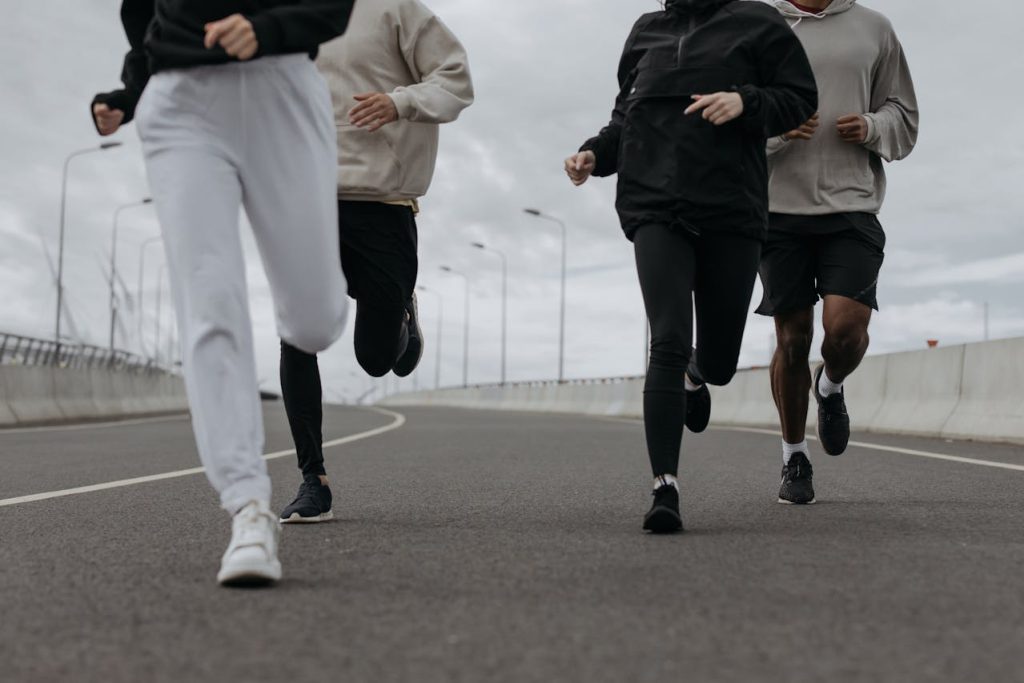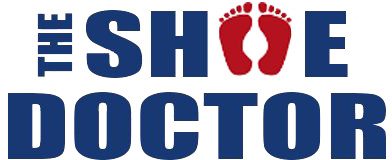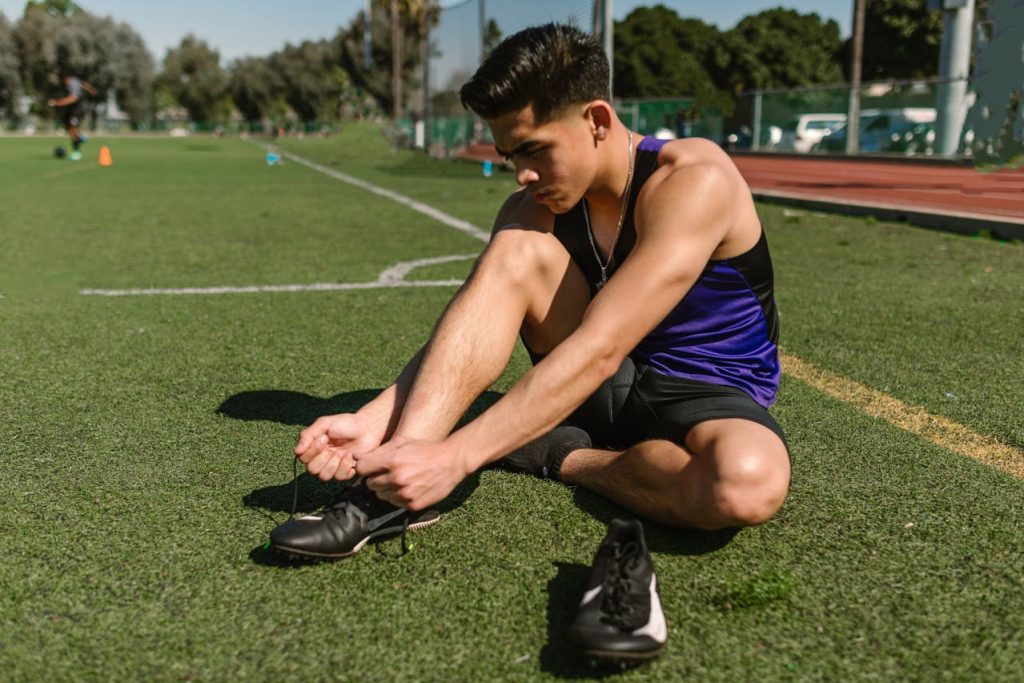Hip pain frequently develops because of improper foot strike when walking. This jarring effect can send shockwaves of stress up the lower extremity and into the hips.
In most other cases across San Francisco, a set of cracked, uneven, and often very long sidewalks only aggravate this. Even the tiniest changes in your gait or foot anatomy can throw your hips out of alignment.
This misalignment may result in a dull ache and eventually sharp hip pain. Gait correction orthotics, custom-fitted to each foot, adjust the path weight takes with every step.
They assist in aligning the legs and hips, relieving tension and discomfort. For people who work on their feet all day, orthotics are an excellent choice for all day support.
They deliver tangible joy for all the city’s walkers. Stay tuned to the hub post to learn how these new tools can help you and your organization.
Key Takeaways
- What causes hip pain Hip pain usually results from a combination of injuries, arthritis, poor posture, and improper gait mechanics. These problems are the unfortunate reality for Americans, whether they actively live or work in a sedentary environment.
- When gait is misaligned or abnormal walking patterns develop, this puts additional stress on the hip joints. That’s why gait analysis and correction are the first steps to lasting relief.
- Only custom gait correction orthotics can give you the specific relief you need. They help correct gait, relieve pressure from joints and help absorb impact, which is particularly beneficial for the millions of Americans who are on their feet for hours at work or engaging in high-impact sports.
- As a result, personalized orthotics provide superior long-term results compared to over-the-counter inserts. They protect your unique biomechanical needs and promote healthier movement patterns.
- Pairing orthotic use for gait correction with a program of strengthening, flexibility exercises, and posture correction can go a long way toward restoring hip health and avoiding future pain.
- Professional consultation with healthcare professionals for evaluation and custom fitting ensures optimal results. Continued support allows orthotics to be properly introduced into the busy lives of everyday Americans.
Why Do My Hips Hurt?
Hip pain is a common complaint among Americans, especially in bustling cities like San Francisco, where daily activities often exacerbate hip problems. With a lot of walking, biking, and longer workdays, many individuals encounter issues related to their gait mechanics. According to the National Institutes of Health, over 16% of adults will experience pain in their hips at one time or another.
For some, this pain escalates into a chronic issue that significantly impacts their ability to work, sleep, and enjoy life. Symptoms such as groin, thigh, or hip pain may be accompanied by a limp and joint stiffness, which can lead to difficulty standing without the right orthotics or support.
These challenges not only hinder daily activities but can also leave you feeling fatigued and mentally drained, highlighting the importance of addressing proper foot support and overall body alignment.
Common Hip Pain Triggers
Here are some common hip pain triggers. Sports, running, or heavy lifting—both in the gym and on the job—are common culprits for strains or sprains. For many, getting older is its own pain.
The cushion in these joints wears away, arthritis moves in, and suddenly moving is a stiff, painful ordeal. Medical conditions such as bursitis, hip labral tears, and even leg length disparities add additional pressure on the hips.
Obesity further contributes to this risk, as carrying excess weight puts more pressure on the hip joints with every step.
Daily Habits Affecting Hips
Daily habits impacting your hips are significant. Posture, gait, and seating position all play a role. Slumping at your desk workstation or hunching over your cell phone may be contributing to stiff and sore hips.
Being stuck sitting all day at work certainly doesn’t help! Footwear with inadequate support—such as flip-flops or old, flat sneakers—can throw off your entire body’s alignment.
This alteration sets the stage for improper biomechanics and ultimately, increased hip pain. While certain workouts are beneficial, too much or incorrect form can do more harm than good.
Recognizing Serious Hip Issues
If you are experiencing pain that persists, don’t wait—get moving. If you’ve found it difficult to move your hip or if you walk with a limp, these are serious signs that should be further examined.
We know early care makes an enormous difference. Understand your risk factors—previous injuries, history of family members, or leg length discrepancy—and be evaluated if pain persists or worsens.
Your Walk and Hip Health
Your walk impacts your hip health. Here’s how and what you can do about it. The way your feet hit the ground and how your legs move can change the load your hips carry each day. When your gait is out of alignment, your hips tend to suffer.
Yet more than 16% of adults in the U.S. Suffer from daily hip pain. These numbers are alarming, and they illustrate just how prevalent and life-altering this issue can be.
How Faulty Gait Strains Hips
An improper gait adds extra stress on your hip joints. If your feet roll too far inward or outward, or if your steps aren’t even, your hip has to work harder to keep you upright.
As one small example, someone who has a leg length difference could start to develop a lean or a limp. This movement adds undue pressure to a single hip. Eventually, this leads to chronic pain or can even erode the joint itself.
Flat feet, high arches, and rigid ankles all affect how force travels up your legs. This change can exacerbate hip issues. Orthotics that provide support in the correct areas can address these problems and distribute stress more evenly.
Identifying Problematic Walking Patterns
Watch for things like limping, dragging a foot, leaning on furniture to get around. Additional symptoms are pain, stiffness, or decreased range of motion of the hip or leg.
Spotting these red flags sooner rather than later will allow you to seek professional assistance before your pain escalates. Record your walk in front of a mirror, or have a friend watch you walk. These can help identify whether your gait is creating issues.
The Body’s Imbalance Chain
The lower body serves as a chain. If one link, like the ankle or knee, is weak or tight, your hip needs to compensate. It does more of the work to make up the difference.
Tight hip flexors and weak glutes can pull your pelvis out of alignment. This improper alignment places additional stress on your hip joint. Proper alignment prevents the whole chain from becoming imbalanced!
Orthotics can help your feet and legs align in a healthier way.

Orthotics: Your Path to Hip Relief
Orthotics can change your hip’s comfort, movement and function on a daily basis. Millions of people in the United States—more than 16% of adults—experience hip pain on a daily basis. Now, with the help of orthotics, their pain is beautiful, allowing them to move and groove freely with less fear.
These picture orthotics are not limited to feet. They support your hips by distributing pressure, absorbing impact, and maintaining proper alignment.
1. Restoring Foundational Alignment
Orthotics provide the foundation your body needs to stay aligned from the ground up. By controlling your foot, they allow the knees, hips, and spine to align properly. This reduces unnatural angles and pressure, which can lead to new hip pain or worsen existing pain.
When your pelvis is aligned; your hips can let go. This almost always leads to increased pain relief. Proper alignment allows your back and hips to work together, leaving you feeling more stable in all directions.
2. Easing Joint Pressure Effectively
Orthotics help distribute your weight across your entire foot—not just one area. This goes a long way toward relieving some of the pressure on your hip joint while you’re walking, standing, or even running.
That added support helps reduce the impact your joints have to endure, helping prevent inflammation and pain from swelling joints. For people with hip issues like bursitis or arthritis, less stress on the joint can make simple tasks—like walking to the store—much easier.
3. Absorbing Impact, Step by Step
Quality orthotics absorb impact, step by step, preventing the shock of impact from traveling up to your hips. This is particularly important if your daily commute involves a lot of walking on concrete urban sidewalks, or if you like to run recreationally in your leisure time.
Reduced impact means less of a jolt to your hip joints. This is important because it stops new injuries from forming, as well.
4. Guiding Healthier Motion
Orthotics can guide you towards moving in a more fluid, natural motion. This can mean reduced discomfort because your hips aren’t being pushed into harmful positions.
In the long run, orthotics can provide muscle retraining too. They can help biomechanically adjust your gait, allowing you to walk and run in a more natural, comfortable way.
5. Clinical Support for Orthotics
Most orthotic fittings are provided by a healthcare provider, such as a podiatrist or physical therapist, who first perform a comprehensive evaluation. They might recommend return appointments to check on the effectiveness of the inserts.
Occasionally, they include some physical therapy at their end to help you get the most out of your new gait. With the right professional, you’ll discover which orthotics are best suited for you, and soon enough start feeling the difference.
Custom vs. Generic Orthotics
The role of custom and generic orthotics in reducing hip pain associated with gait abnormalities. They aren’t all created equal in the support they offer. Custom orthotics are constructed specifically for you—customized from in-depth 3D scans or impressions of your feet.
These devices address particular issues like flat feet, plantar fasciitis, or Achilles tendon problems. In addition, they assist in redistributing pressure more evenly. Conversely, generic or over-the-counter (OTC) insoles provide the bare minimum support and cushioning.
Patients with less severe conditions do better with them. Most of them realize that they don’t accommodate their individual needs or offer sufficient support for more severe cases.
The Limits of Off-the-Shelf
Unlike custom orthotics, you can find generic orthotics in nearly every drugstore in the U.S. They are premade in specific shapes and sizes, so they are seldom, if ever, the exact shape of your foot.
This results in predictable issues — such as excess chafing, inadequate arch support, or insufficient cushioning in the appropriate areas. Off-the-shelf inserts typically do not account for these important factors like an uneven gait, limb length disparities or high arches.
Consequently, many users experience pain relief and even the development of new pain after wearing them for a short time. The limitations of off-the-shelf options often fail to help feet with the most severe or complex issues.
Benefits of Tailored Support
Custom orthotics—often produced using 3-D printing technology to ensure the exact fit—have been shown to increase the effectiveness of hip pain treatment. Created for an anatomical foot structure and function with support designed to your foot’s structure and movement, these inserts assist with correcting specific gait issues.
This level of individualized care results in reduced pressure on the hips and improved foot health overall. Fulfilling individual requirements with a personalized device can translate to decreased injuries and enhanced comfort in everyday activities.
Investing in Your Unique Needs
While custom orthotics are pricier—typically ranging from $200 to $800—they tend to last longer and perform better in the long term. Accurate support is crucial. These orthotics offer very specific support.
They encourage your body to move in a more natural, healthier way which can help you avoid future hip and foot issues. Since, like tires, they wear out over time, this makes them a more economical option, particularly for patients with chronic pain or advanced foot deformities.
With technology and the guidance from qualified professionals, personalized care can make a permanent difference.
Holistic Hip Pain Management
Hip pain management is about more than just eliminating pain. It takes a comprehensive, multi-faceted approach. Hip pain can make even simple movements, such as walking or standing up, difficult. It can start to eat away at sleep, leaving you exhausted and fuzzy-headed.
Approximately 1 in 6 adults—more than 16% of the adult population—suffer from moderate to severe hip pain. Causes run the gamut from arthritis and cancer to overuse injuries such as bursitis or hip labral tears. Often, it’s just a matter of what you’re doing with your body. If you have a leg that’s a bit longer, flat feet, or your steps roll in or out, your hips can take on more stress.
These are especially beneficial for runners, as orthotics can assist in distributing your weight more evenly. They enhance your posture and gait while reducing impact forces to your joints.
Posture’s Role in Hip Comfort
Posture’s role in hip comfort is significant. When your spine is aligned properly, your hips aren’t working over time. These small changes—such as improving chair or workstation ergonomics—can make a significant difference in mitigating everyday pain.
Paying attention to your posture while you sit and stand can make a big difference in the long run.
Professional Guidance is Key
Professional guidance is key. Never hesitate to consult a healthcare professional if your hip pain persists. Our orthopedic specialists can identify your issues and establish a treatment plan tailored to your needs.
Plus, regular visits can detect any changes before they worsen and will ensure that you’re using your orthotics effectively.
Making Orthotics Part of Life
Make orthotics part of your daily routine in properly fitted shoes to address gait issues and improve overall body alignment. Following through with supportive orthotics increases comfort and helps you stay active, reducing joint pain and enhancing your walking ability.
Conclusion
Hip pain doesn’t have to slow you down. Gait correction orthotics, designed for your specific walking pattern, can align your joints and ease pressure where it hurts most. Whether you’re walking the Embarcadero or on your feet all day, custom orthotics can make every step more comfortable. Start with a gait analysis and talk to a local expert to see if orthotics are right for you. Your next pain-free walk could be just around the corner.
Frequently Asked Questions
Why do my hips hurt when I walk?
Most hip pain is often linked to improper gait mechanics, fallen arches (flat feet), or leg length discrepancies, which can lead to joint pain and discomfort due to additional pressure on your hip joints.
Can gait correction orthotics really help hip pain?
Indeed, gait correction orthotics play a crucial role in aligning your feet and legs, which helps relieve stress on your hips and alleviate hip pain challenges. Many riders in San Francisco have reported increased satisfaction after utilizing supportive orthotics for their gait issues.
What’s the difference between custom and generic orthotics?
What’s the difference between custom orthotics and generic options? For special cases such as unique foot structures or severe hip pain challenges, custom orthotics provide the best support and fit.
How do I know if I need gait orthotics?
If you experience chronic hip pain or gait issues, uneven wear on your shoes, or worsening pain during physical activities, appropriate custom orthotics may help. A trained professional, like the podiatrists at our San Francisco facility, can provide a complete gait analysis.
Are orthotics covered by insurance in California?
Many insurance plans in California will cover custom orthotics, especially those designed for proper foot support, if prescribed by a doctor.
How long does it take to feel hip pain relief with orthotics?
Most users begin to feel pain relief from hip surgery within a few weeks with regular, daily use of appropriate custom orthotics. Maintaining and expecting full benefits can take some time, too—up to eight weeks, based on your specific condition.
Can I use orthotics with any type of shoe?
Athletic and walking shoes generally accommodate supportive orthotics with ease. Certain custom insoles can even be used in dress shoes or boots. Inquire with your provider about appropriate custom orthotics and shoe compatibility.
Walk Better, Live Better: Find Balance With Gait Correction Orthotics From The Shoe Doctor!
If joint pain, poor posture, or recurring injuries are slowing you down, gait correction orthotics could be the key to realigning your stride, enhancing comfort, and restoring your confidence. Imbalanced gait patterns often lead to foot, knee, hip, and back issues that affect your everyday mobility and long-term health. Our custom orthotics work to stabilize foot mechanics, distribute pressure evenly, and correct imbalances—supporting proper alignment from the ground up so you can walk tall and pain-free.
At The Shoe Doctor, we bring over 20 years of expertise in designing high-performance orthotics tailored to your body’s biomechanics. Russell uses advanced 3D foot-mapping technology to analyze your unique gait and foot structure, ensuring each orthotic is meticulously crafted for optimal support and function. We take a comprehensive approach to gait correction—addressing root causes, not just symptoms.
If you’re in the South San Francisco Bay Area, trust The Shoe Doctor for personalized gait correction orthotics that align your steps and protect your future. Schedule your complimentary consultation today and take the first step toward smoother, stronger movement!
Disclaimer
The materials available on this website are for informational and entertainment purposes only and not to provide medical advice. You should contact your doctor for advice concerning any particular issue or problem. You should not act or refrain from acting based on any content included in this site without seeking medical or other professional advice. The information presented on this website may not reflect the most current medical developments. No action should be taken in reliance on the information contained on this website and we disclaim all liability for actions taken or not taken based on any or all of the contents of this site to the fullest extent permitted by law.


